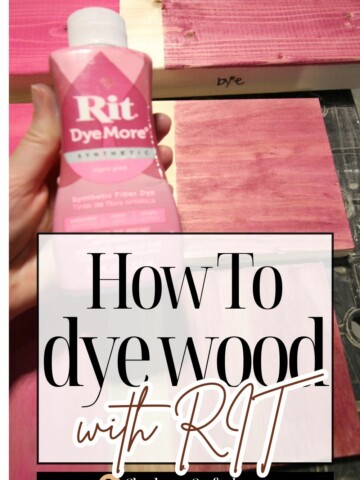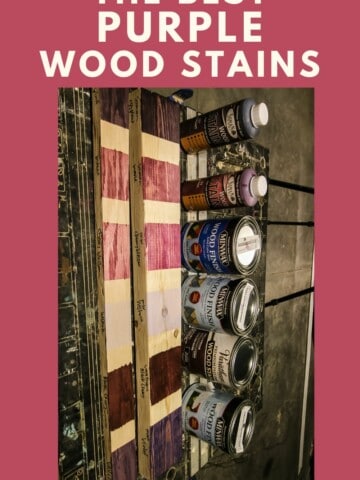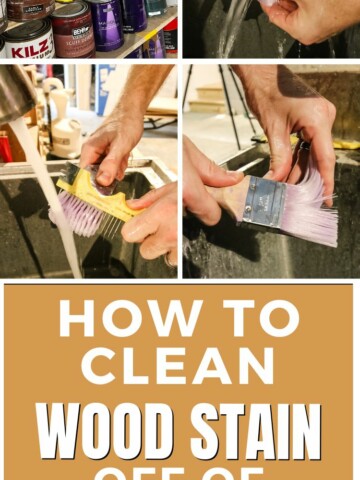Have a butcher block countertop or tabletop that you want to add color and topcoat to? Here are the best wood finishes for butcher block - stain and oils!
I love using cohesive materials throughout our home, and one material that we have chosen to use a lot and this home is butcher block. We have used it as:
- Tabletop in my closet built ins
- Desk top in our home office
- Countertop in our walk in pantry
- Bench top in our mudroom lockers
While I love the look of butcher block because it has a light, raw, natural aesthetic, you can't just leave butcher block completely raw. It needs to be sealed or stained before you start really using it.
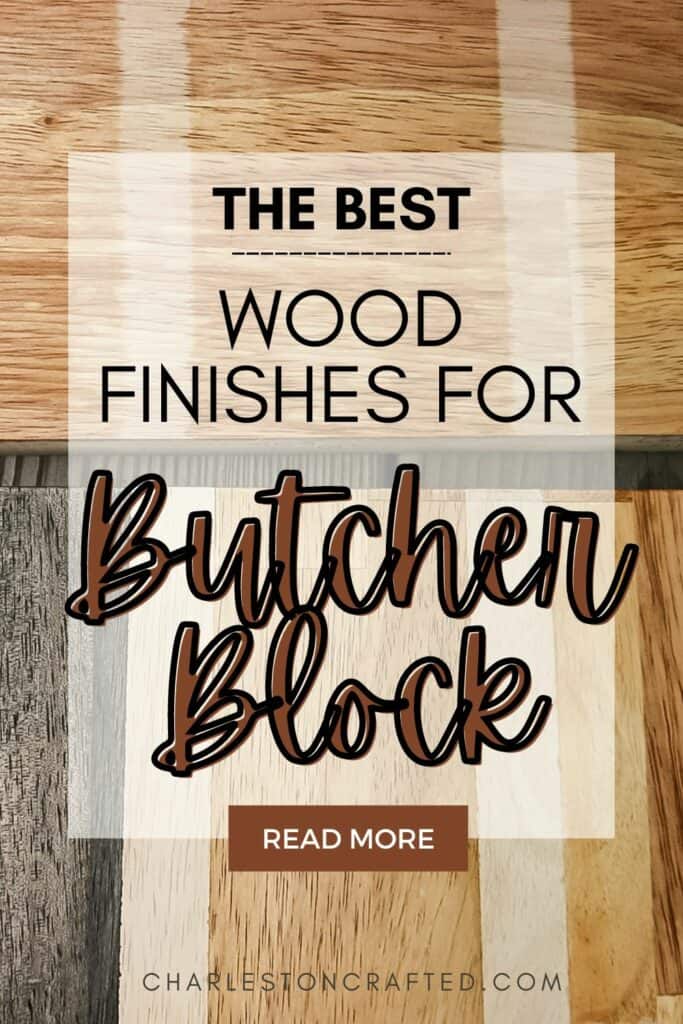
Does a butcher block need to be sealed?
It is very important that you apply some kind of butcher block sealant to your wood surface. Raw butcher block is just a soft, porous wood surface. It gets stained and damaged very easily.
This could be a visible stain or it could mean that the wood gets slightly raised and bumpy after being wet with even just water.
If you do not protect and treat your butcher block countertops, they will not last.
If they are oiled, and the oil starts drying out, the wood will dry out and start to look bad and then get a damaged feeling to it.
By properly sealing your butcher block with either a butcher block specific wood stain or appropriate sealant, you will help protect your butcher block surface and help it to last for years to come.
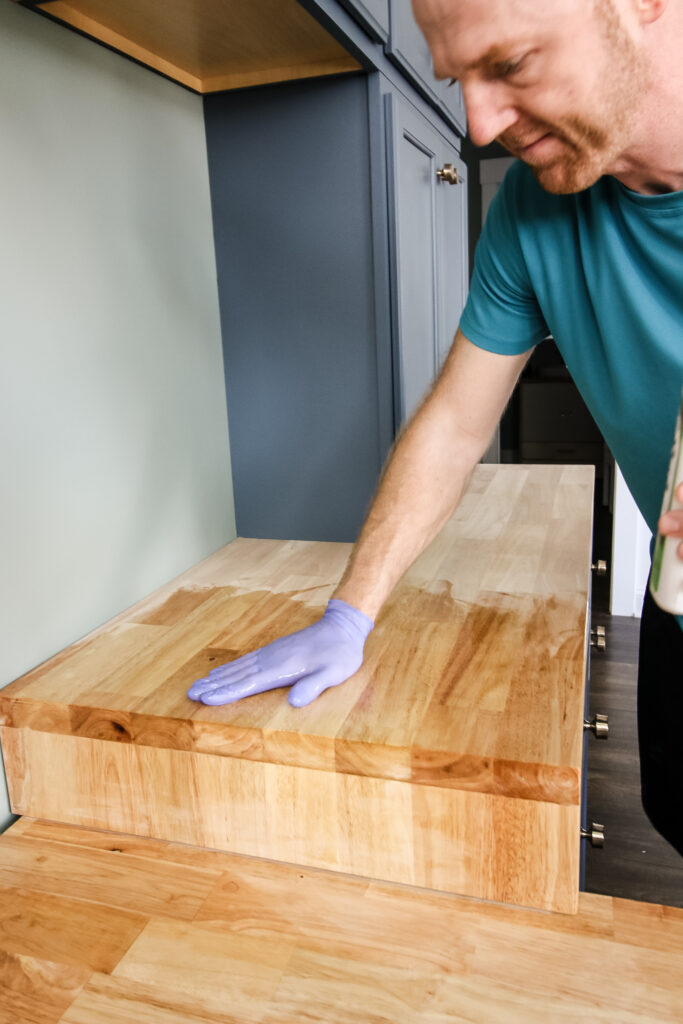
Tips for Choosing and Applying the Best Finish for Butcher Block
Before diving into the various wood finishes, consider a few factors that can help you narrow down the best option for your butcher block:
- Color Preference: Determine whether you want to preserve the wood's natural color or change it. If you wish to significantly change the wood's existing color, you will want to use a wood stain.
- Food Safety: If your counters will come in contact with food (like in a kitchen) then you will want to choose a food safe wood stain or oil. Otherwise, you have more options.
- Maintenance: Consider the maintenance requirements of different finishes. Some oils and finishes may require more frequent touch-ups or reapplication compared to others.
- Durability and Waterproofing: Depending on the intended use of your butcher block, you might prioritize a finish that offers excellent durability and waterproofing properties.
Regardless of which finish you choose, following these tips will help you achieve the best results:
- Read and follow the instructions on your chosen wood finish can carefully, including the number of coats, sanding between coats, and drying/curing time.
- Lightly sand the wood surface with 220-grit fine sandpaper before applying the finish to ensure better adhesion.
- Apply the finish in the direction of the wood grain to achieve a natural appearance.
- Wipe off any excess oil or finish that pools on the surface after approximately 10 minutes to prevent rings and stains.
- Ensure proper ventilation and follow safety procedures, such as wearing gloves and a face mask, when applying the wood finish.
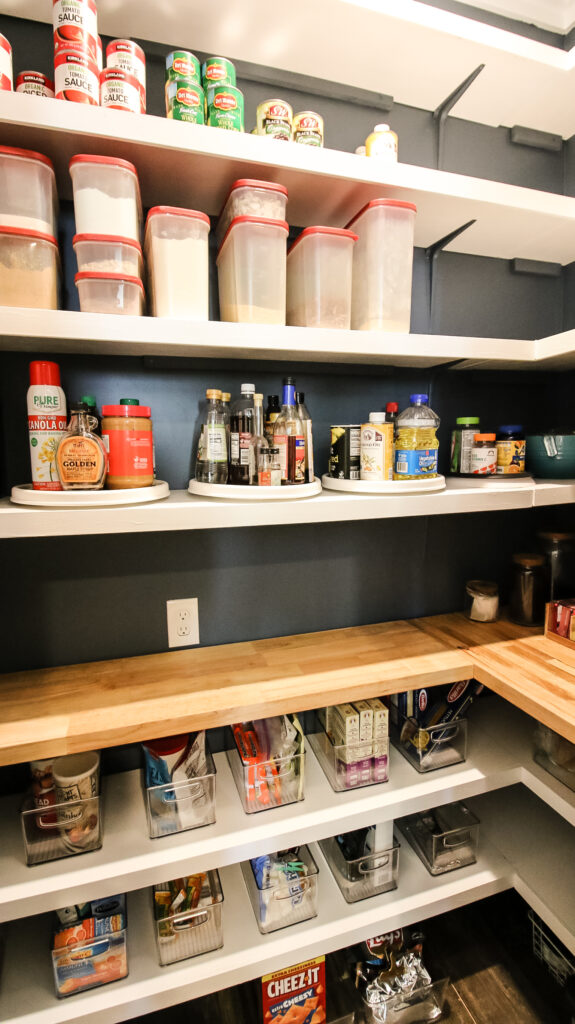
Choosing your butcher block variety
When it comes to butcher blocks, you'll find an array of wood types to choose from. Birch, oak, and Walnut are all common types of butcher block that you can find a many stores.
However, for this guide, we're focusing on traditional unfinished birch butcher block. This is generally the cheapest option, and it is what we used scraps of (left over from our home office) for the stain tests.
Just know that if your butcher block is a different species, it will look different with the oils and butcher block finishes that we tested.
Always test your sealants and stains on a small hidden spot before you commit to staining the entire project in case you don't have like how it looks on your actual wood.
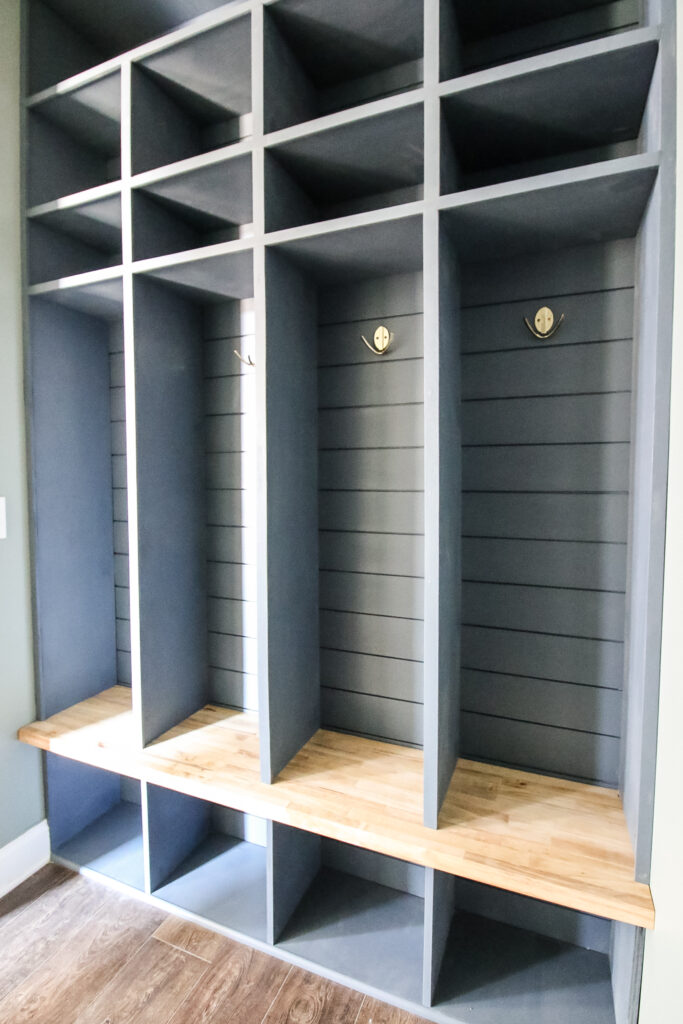
Food-Safe Oils for Butcher Block
Food-safe wood oils are a popular choice for enhancing the durability and appearance of butcher blocks while preserving their natural charm. Here are some excellent food-safe wood oils to consider:
- linseed oil
- mineral oil
- walrus oil
- shellac
- tung oil
| Wood Oil | Food-Safe | Waterproof | Color | Sheen | Reapplication Frequency |
|---|---|---|---|---|---|
| Linseed Oil | Yes | No | Light amber to brown | Satin | Every 6-12 months |
| Mineral Oil | Yes | No | Colorless | Matte | As needed |
| Walrus Oil | Yes | Yes | Golden amber | Satin | As needed |
| Shellac | Yes | No | Amber | Gloss | As needed |
| Tung Oil | Yes | Yes | Amber to dark brown | Satin | Every 1-3 years |
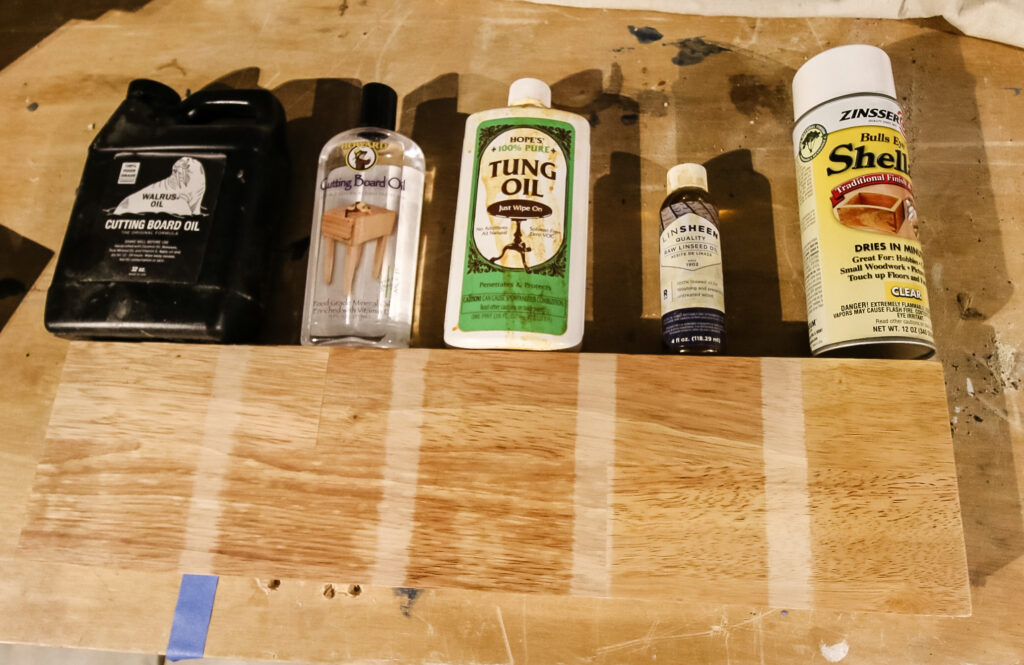
Linseed Oil
Derived from the flax plant's seeds, linseed oil provides a warm and rich appearance to wood surfaces. It naturally repels water but is not fully waterproof. Linseed oil dries to a hard finish when fully cured and requires reapplication every 6-12 months.
Read our complete guide on how to use Linseed Oil
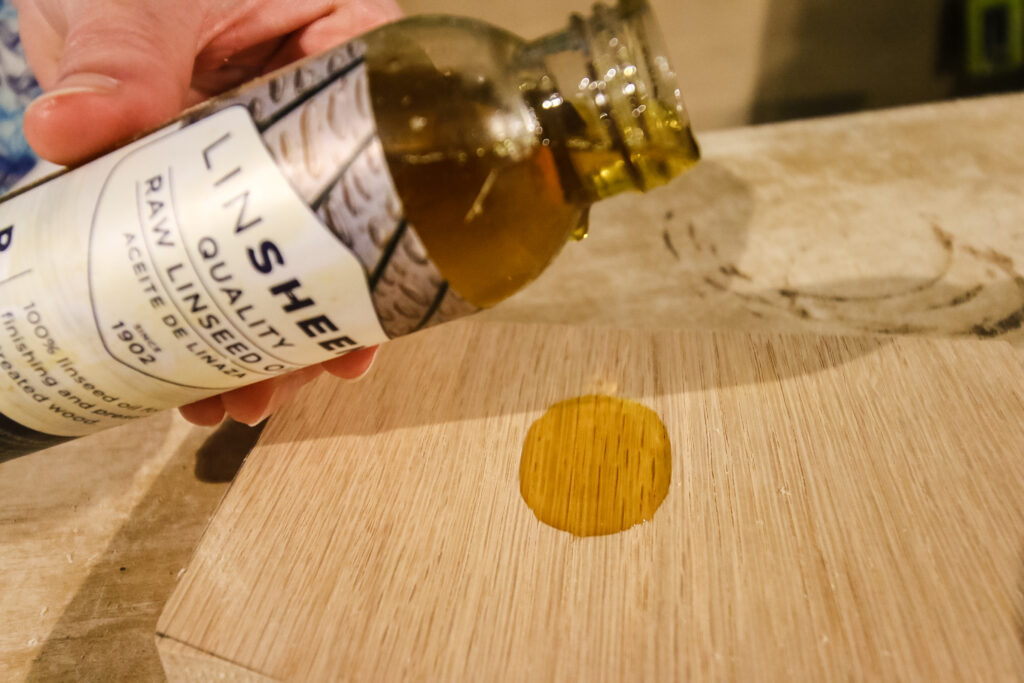
Mineral Oil
Often used as a food-safe wood finish, mineral oil is derived from petroleum and offers excellent water resistance. It is non-toxic and easy to apply, providing a matte finish. Reapply as needed, it tends to dry out fairly quickly.
Read our complete guide on how to use Mineral Oil
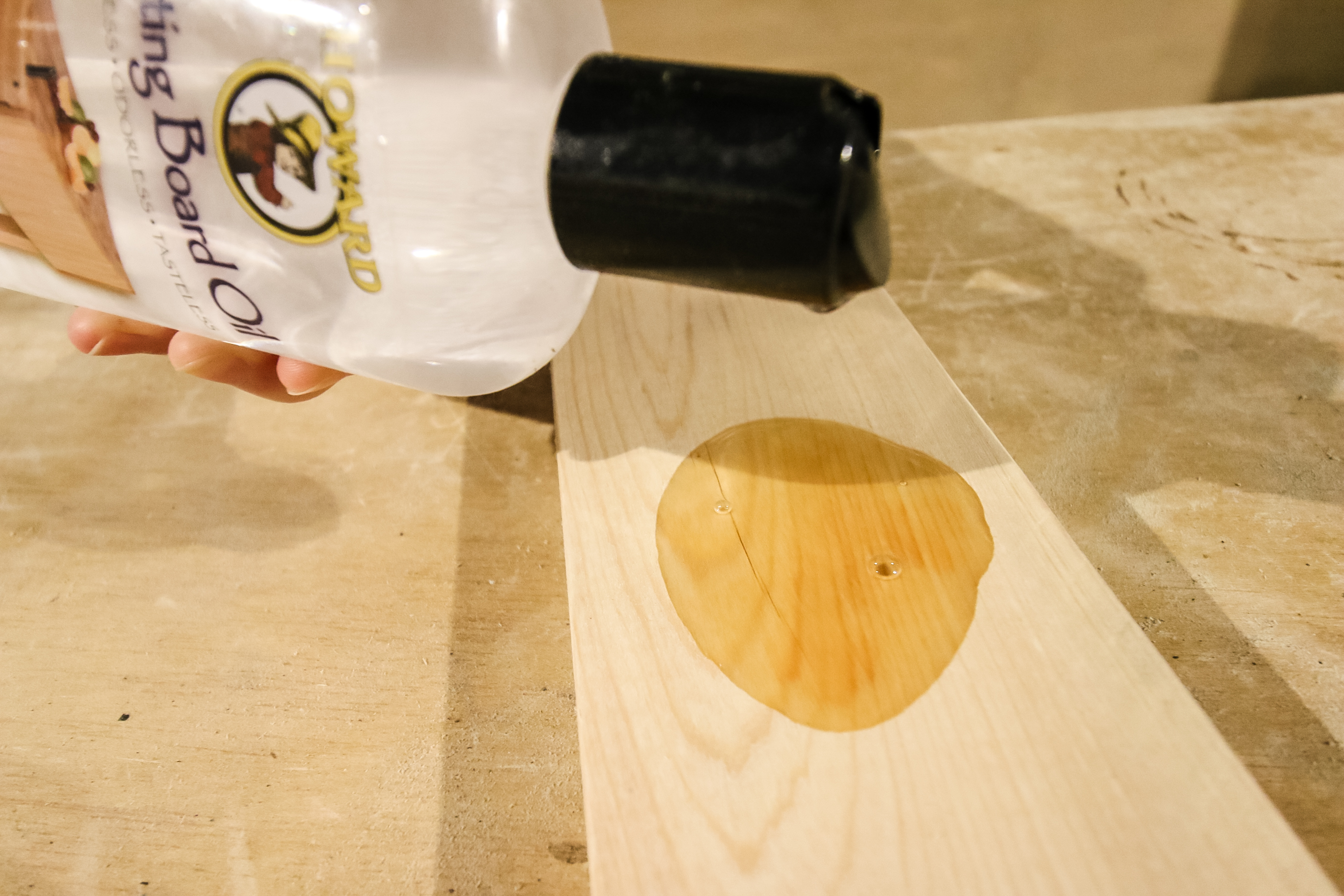
Walrus Oil
Made from a blend of coconut oil, beeswax, mineral oil, and vitamin E, walrus oil adds a golden amber color and satin finish to wood surfaces. It is a waterproof finish that can be reapplied as needed.
Read our complete guide on how to use Walrus Oil
Shellac
Available in spray or wipe-on options, shellac is another non-toxic and durable wood finish. It offers a glossier appearance and a harder finish.
Read our complete guide on how to use Shellac
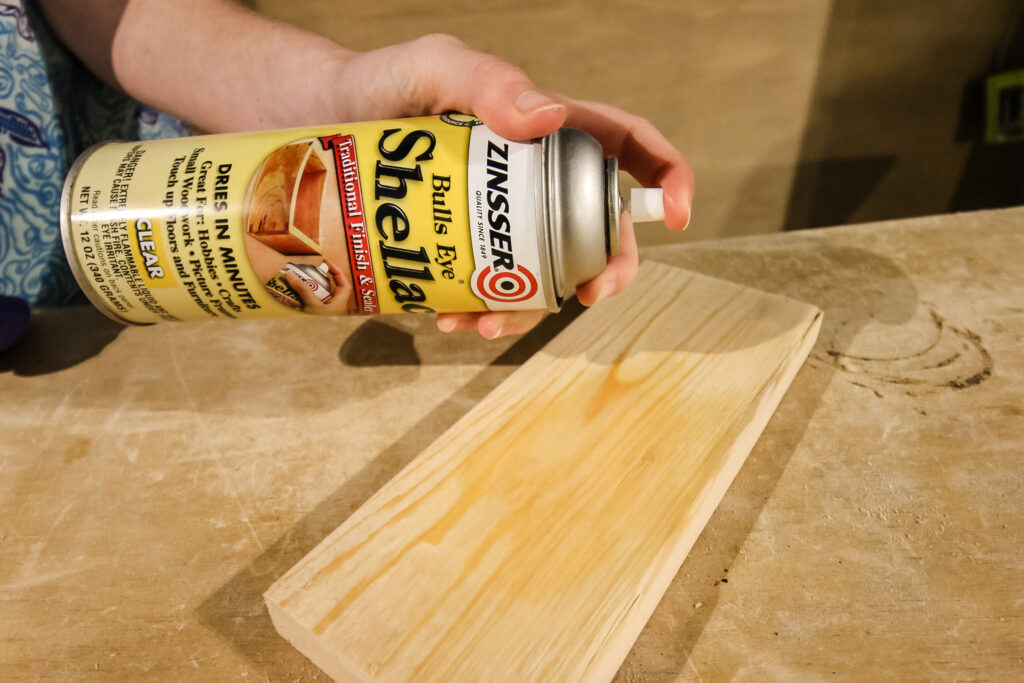
Tung Oil
Extracted from the seeds of the tung tree, tung oil dries to a hard, dry surface coat. It is VOC-free and suitable for finished, painted, and bare wood. Reapply every 1-3 years.
Read our complete guide on how to use Tung Oil
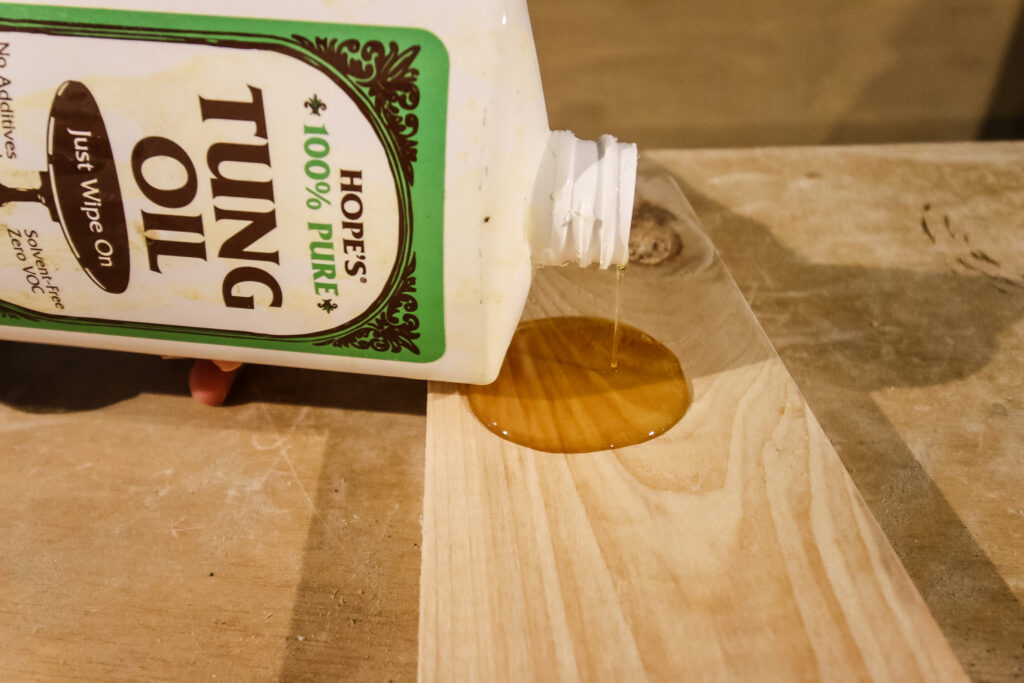
Food-Safe Wood Stains for Butcher Block
If you prefer to change the wood's color, food-safe wood stains are the way to go. Although not as abundant as traditional wood stains, here are two popular food-safe wood stain options:
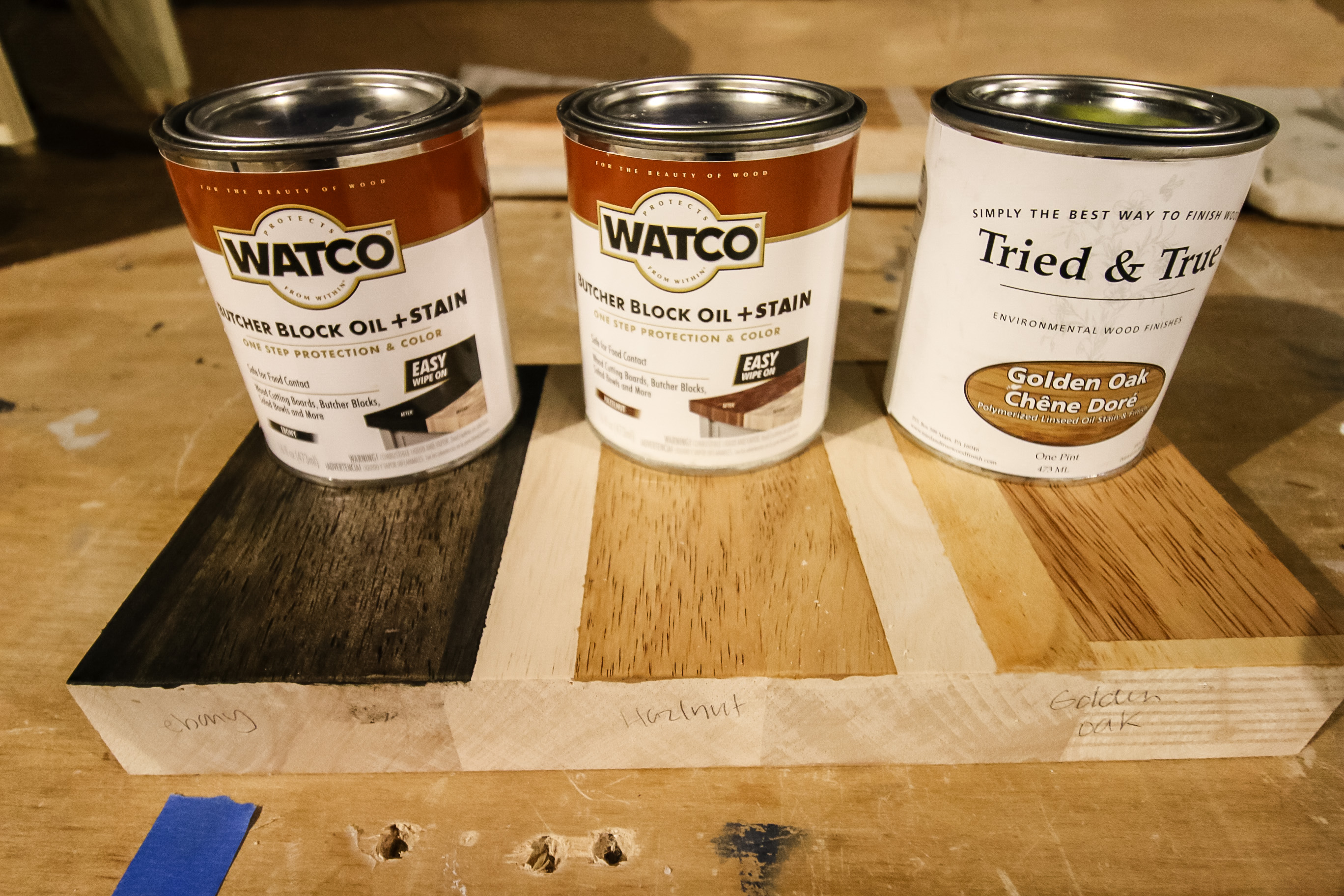
Watco Butcher Block Oil and Stain
Watco offers a combined butcher block oil and stain that comes in various colors, including Hazelnut and Ebony.
These stains are easy to apply and deliver beautiful results, darkening the wood while providing a slight sheen. Choose the color that best complements your butcher block.
I grabbed both the Hazelnut and Ebony colors which were the only colors available at my Lowe's.
I will say that, especially with the Ebony color, you really want to go ahead and wipe off any excess immediately. Let it sit for about five minutes, which is what I normally do with wood stains and I had to really muscle to get some of the excess blobs off of there.
I'm not sure if it was quick drying or what happened but definitely wipe off access as you apply especially with the darker colors.
Speaking of colors, I think of these were really poorly named. To me, hazelnut should be a pretty dark brown, and Ebony should be almost black.
Instead, when I applied these to butcher block, which is the intended use, hazelnut turned more of what I would consider a golden oak, and Ebony was closer to walnut.
That being said, these both applied very nicely, and gave the butcher block a really, pretty color. They both definitely darkened the butcher block more than just applying in oil.
They have an ever so slight sheen to the finish.
I do love that this is a one step option so you don't need to apply topcoat or anything this is it.
Overall, I really think that the Watco food safe stain in one is a good option if you want a food safe wood stain.
Just be sure to swatch them on your actual wood in advance to make sure that you like the color before committing.
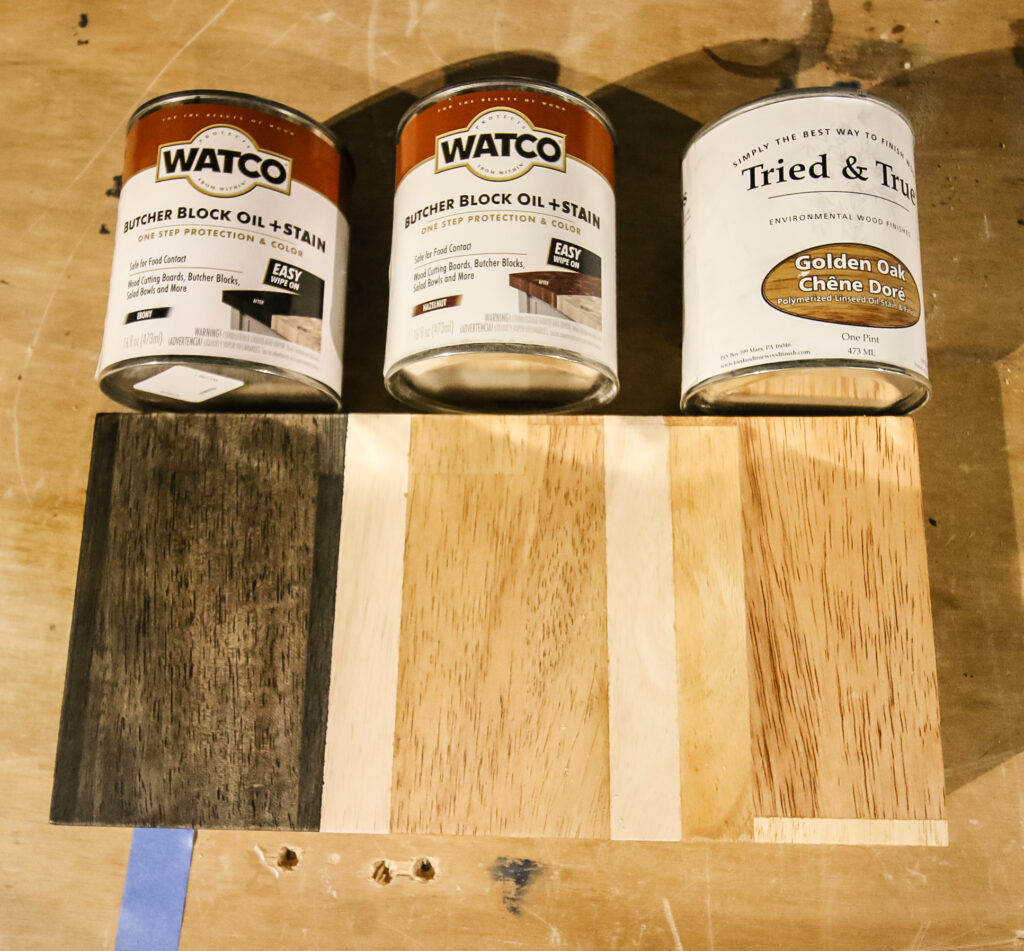
Tried & True Stain + Finish
The second option of food, safe butcher block stain colors that I tested was by tried + true brand. I chose the golden oak color.
They offer five different colors, but honestly at over $30 a pint, since I wasn't working on a real project and just testing stains here, I only wanted to buy one.
The colors offered are:
This stain applied like a normal stain as well, and added a rich golden color to the wood. I definitely think that the color was true to it's Golden Oak name.
It is also worth noting that this finish was much more matte than the Watco version - there is essentially zero sheen to it.
I also think that the finish is slightly smoother to the touch, even without any sanding after the oil dried.
Because of the matte finish and smoother look, this is going to be my pick for favorite food safe stain for wood. But, both brands are very, very similar and I don't think you can go wrong with either.
Non-Food Safe Wood Stains
If you're working on projects that won't come into contact with food, you have even more options for wood stains and finishes.
- white wood stains
- gray wood stains
- blue wood stains
- black wood stains
- ebony wood stains
- dark brown wood stains
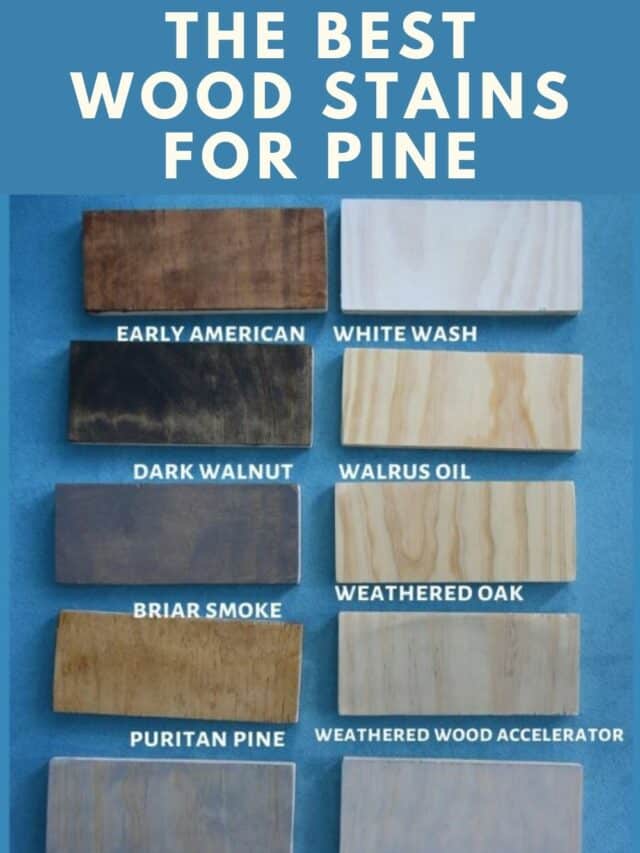
You can see 10 popular wood stains tested on 5 types of wood here.
If you plan to stain your butcher block, a dark color, I definitely suggest using a wood conditioner treatment before applying the stain to cut down on blotchiness and get a more perfect finish.
Regardless of what you choose, sealing your butcher block counter top will help to extend it's life and protect the surface for years to come.
What is your favorite way to finish butcher block countertop?
Looking for something?
We've been doing this since 2012 so we have a LOT of blog posts!
Search stuff like: Ceiling Projects | DIY Plant Stands | Thrift Flips


Hello, I'm Morgan, half of the creative force behind CharlestonCrafted.com! With a passion for DIY that dates back to 2012, I've transformed three homes and now I'm dedicated to helping others craft their dream spaces. Let's turn your house into a home together!


